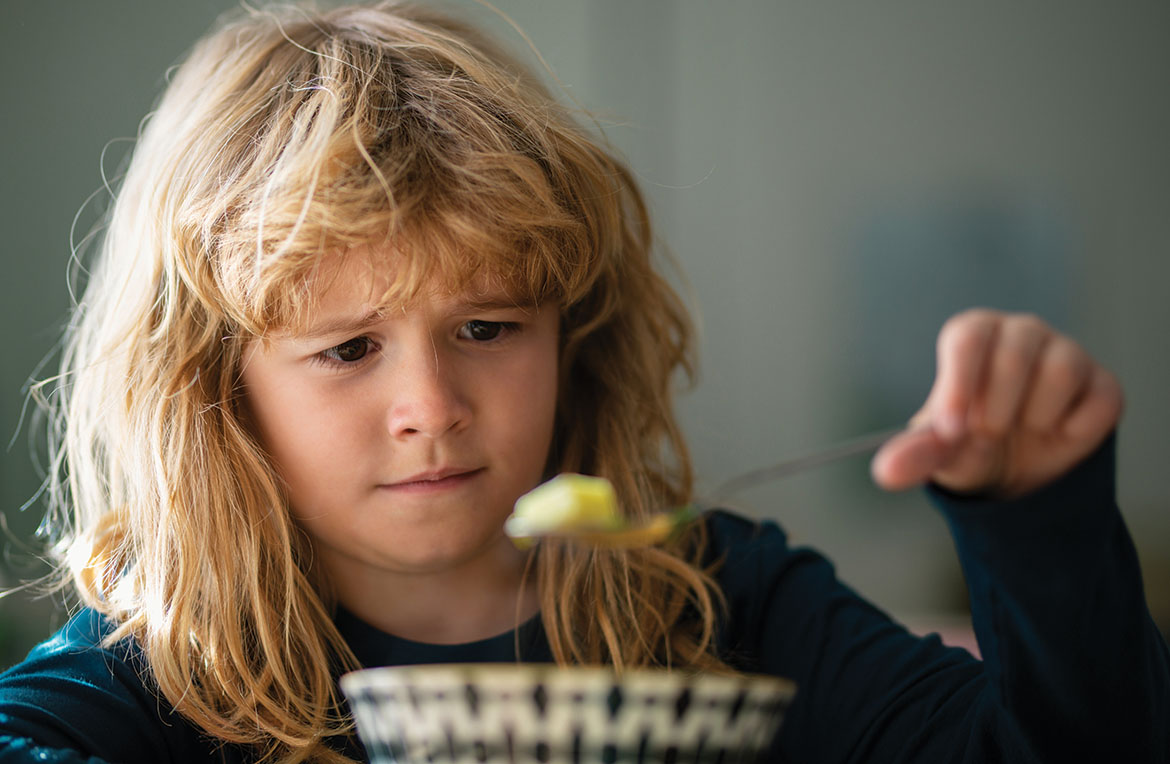by Clare Marcangelo, Early Childhood Nutrition and Behaviour Expert
I don’t usually use this term, as I feel “fussy eating” does children a disservice. 20 years ago I was working with kids who just needed a bit more structure, or some clever strategies to help them through their unwanted eating habits. What I see these days is not this, and it’s important we give this issue the attention it deserves.
More often than not nowadays, it is not a choice, my patients are not being “fussy” and it can become a debilitating issue. The old advice of “leave them they will eat eventually” (which I used to successfully apply!) seems to be becoming less and less accurate. Every day I see children who when given this “tough love” approach, just do not eat.
This leaves parents in a flurry of stress and worry, and when reaching out for advice they either find absolutely nothing that works or worse still – the dreaded judgement. Part of the problem is that one of the drivers is anxiety. As having even just one restricted eater in your household can take over everyone’s lives causing immense stress, our stress as parents and caregivers feeds our child’s anxiety around mealtime even more and so we stay on a roundabout ride we never wanted to be on, with no idea how to hop off.
So, what are some of the reasons for this kind of issue and what we do as parents?
A very high percentage of children that I see started to stop eating foods around two and a half years old. That is partly due to this being a normal, developmental stage where we start to develop specific tastes. When it goes beyond this and your child loses whole food groups or you find they mainly eat a “beige diet” – relying on plain starchy foods and not being able to stomach most coloured foods (other than fruit) then we know we must act.
This can be triggered by a number of things, and like I always say – it’s never just one thing. So, let’s break it down.
Your child may have been born with an already slightly imbalanced gut, meaning that there may be a little too much of a potentially problematic bacteria and/or not enough of some of the beneficial bacteria. A trigger during those early stages of eating such as a virus or contracting a parasite can then start to really imbalance everything within the gut.
Because they are reliant on starchy, sugary foods to survive and proliferate, bad bacteria can sometimes start to send messages to the brain that these are the foods we crave. Instead of bacteria – the kind we need fibre; rich, antioxidant rich, prebiotic foods. (All the colourful veggies your child now does not eat.)
The unfortunate truth is that many veggies can be perceived as too bitter, or lack the sweetness of other foods, and so those messages die out and get replaced by the ones for our beige foods. Once we have a true imbalance in the gut, anxiety often increases. Remembering that 90% of Serotonin alone is found in the gut so it makes sense that if it is not quite functioning how we would like it, feeling relaxed may be difficult under stress. Or perhaps your child has had an unpleasant experience with food, a texture that made them gag, a food that got stuck in their throat or a night where they unconsciously connected their sore tummy with the dinner they ate. Or they may have sensory or proception issues, not tasting properly or not experiencing hunger cues the way that you do.
Additionally, they may have an existing deficiency, which can impact both taste perception and appetite. So anxiety around trying to eat unwanted foods can quickly skyrocket, and if we couple this with sensory issues, we really have a reason to avoid the dinner table.
This is just the start, and I explain the mechanisms of how and why this develops and what we can specifically do about it to all my families. The good news is we can turn it around. It does take time, and each child’s story is unique. But given the right tools we can reverse this for even the most restricted eater. So please don’t worry, it can be done. It’s about working out specifically what your child’s drivers are because there is never just one, this is how such a straightforward issue can become so complicated in short amounts of time.
And then making a plan that addresses this, bearing in mind that they may need baby steps and any progress at all (even if it’s eating something that isn’t that nutritious but is a totally different texture/taste/food group to what they have been choosing) is a big win.
Clare Marcangelo is an Early Childhood Nutrition and Behaviour Expert with over 20 years experience working with local families. She has 3 children of her own and has been reading and contributing to Families on the Coast since the very beginning!
Email e-thechildrensnutritionist@gmail.com | www.thechildrensnutritionist.com.au

